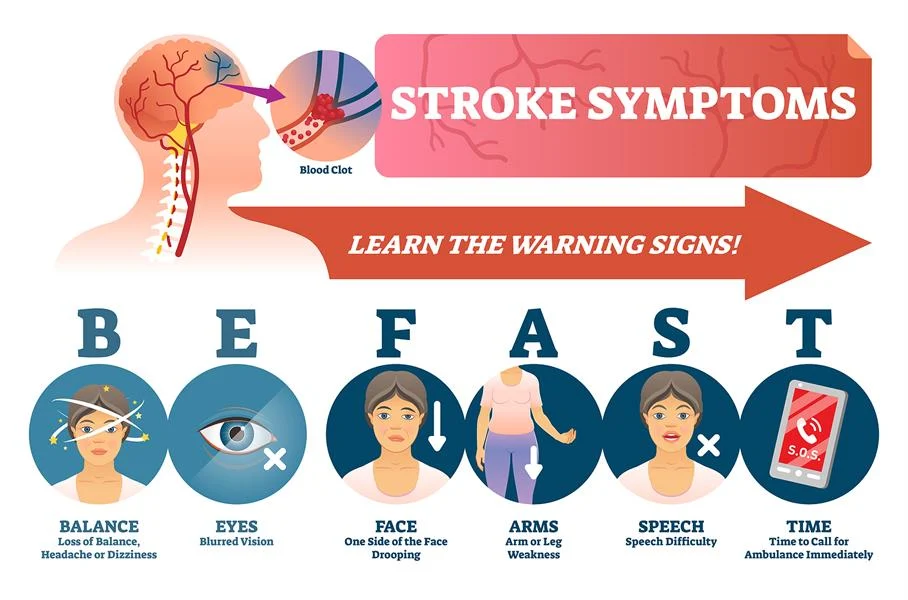Abstract
Stroke is a significant health concern that affects both men and women. However, research has shown that stroke symptoms can present differently in women compared to men. Understanding these gender-specific differences is essential for early detection and timely intervention. This article explores the top 10 stroke symptoms and highlights how they may manifest differently in women, providing insights into the importance of gender-sensitive stroke awareness.
Read also: Women May Face Higher Risk of Stroke Following Infertility Treatment
Introduction
Stroke is a leading cause of death and disability worldwide. While strokes can affect anyone, regardless of gender, emerging research suggests that stroke symptoms may differ between women and men. Recognizing these gender-specific variations is critical to ensure prompt medical attention and improve outcomes. This article will explore the top 10 stroke symptoms and discuss how they can present differently in women.
1. Sudden Numbness or Weakness
One of the hallmark signs of a stroke is sudden numbness or weakness, typically on one side of the body. In women, this symptom can be more subtle and often mistaken for fatigue or muscle pain. Women may experience less noticeable weakness, making early recognition challenging.
2. Facial Drooping
Facial drooping is a classic stroke symptom. In women, this may involve slight asymmetry in facial features, such as a subtle droop in the corner of the mouth or eyebrow, which can be easily overlooked.
3. Trouble Speaking or Understanding Speech
Difficulty speaking or understanding speech can affect both genders, but women may exhibit more atypical symptoms, such as trouble finding words or experiencing confusion in their speech.
4. Vision Problems
Sudden vision problems are common in stroke, but in women, this may manifest as blurred or double vision, which can be mistaken for eye strain.
5. Severe Headache
While a severe headache can be a stroke symptom in both men and women, women are more likely to experience migraines, and a stroke-related headache can be overlooked as a routine migraine.
6. Dizziness or Loss of Balance
Dizziness or loss of balance is a stroke indicator, but women might downplay these symptoms as they can be related to fatigue, vertigo, or other non-life-threatening issues.
7. Sudden Behavioral Changes
Women may display sudden behavioral changes such as confusion, agitation, or irritability when experiencing a stroke, whereas men might exhibit more stereotypical symptoms like aggression.
8. Nausea and Vomiting
Nausea and vomiting are less common but not unheard of stroke symptoms. Women experiencing these symptoms should consider stroke as a possibility, even if they are more prone to gastrointestinal issues.
9. Chest Pain or Palpitations
Women experiencing a stroke may report chest pain or palpitations, which can lead to misdiagnosis or delayed treatment due to the overlap with heart-related symptoms.
10. Loss of Consciousness
In some cases, stroke can lead to a loss of consciousness in women, but this may not be immediately associated with a stroke, leading to delays in seeking help.
Conclusion
Stroke does not discriminate by gender, but the way it presents can vary between women and men. Recognizing the top 10 stroke symptoms and understanding how they may manifest differently in women is crucial for early detection and timely intervention. Improved awareness of these gender-specific differences can help healthcare professionals, family members, and individuals at risk to recognize stroke symptoms promptly, leading to better outcomes and increased chances of recovery. Raising awareness of these differences and promoting gender-sensitive stroke education is essential for reducing the impact of stroke on women's health.
Bibliography:
1. Labiche, L. A., Chan, W., Saldin, K. R., Morgenstern, L. B. (2002). Sex and acute stroke presentation. Annals of Emergency Medicine, 40(5), 453-460.
2. Reeves, M. J., Bushnell, C. D., Howard, G., Gargano, J. W., Duncan, P. W., Lynch, G., ... & Peterson, E. (2008). Sex differences in stroke: Epidemiology, clinical presentation, medical care, and outcomes. The Lancet Neurology, 7(10), 915-926.



Post a Comment
Full Name :
Adress:
Contact :
Comment: